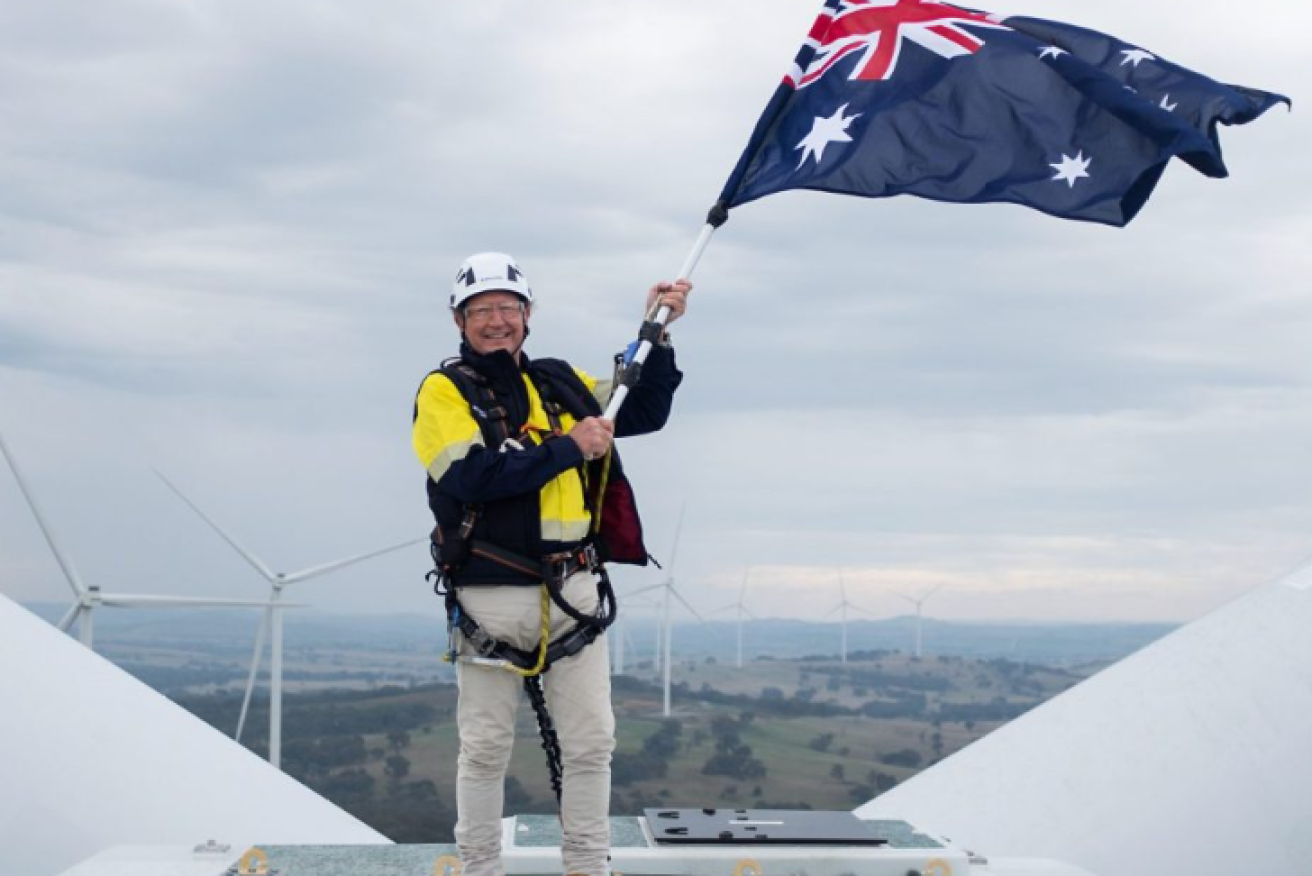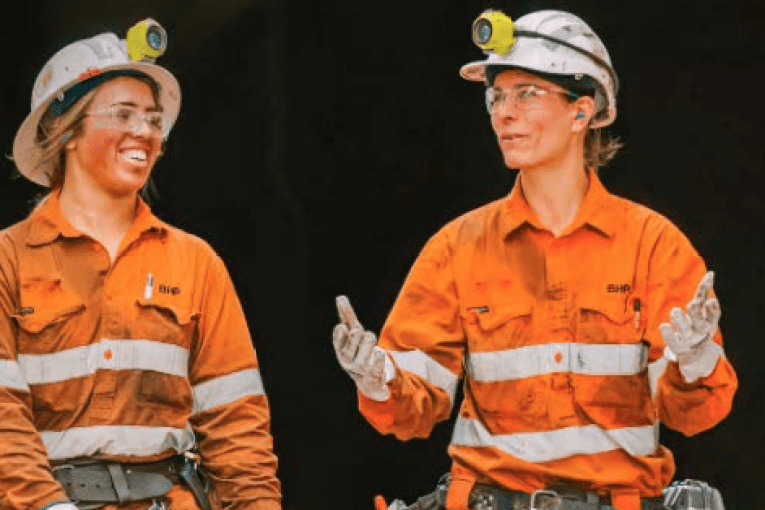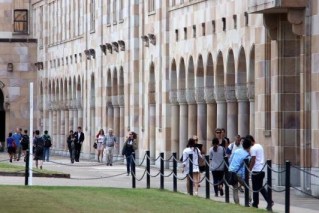Blowing in the wind: Former Greens eco-warrior says we should all fear wind turbines
The renewables sector is booming but one man is shouting from the rooftops that it is coming at a huge cost to the environment and he’s getting strong support, writes John McCarthy


Andrew Forrest at the opening of the Bargo wind farm in NSW (Photo: Tattarang)
Steve Nowakowski has some green cred. He is a former Greens candidate (Cairns 2006) and is a co-founder of Rainforest Reserves Australia.
That’s important because you have to know when Nowakowski says something there is more than a tinge of green in his background. We are not dealing with a climate change denier. And let’s face it, fronting up for the Greens in Cairns in 2006 took some guts and conviction.
However, it’s fair to say his views are now out of kilter with the Greens, especially his support for nuclear energy, but also his attack on renewables which has been picked up and weaponised by Sky News and its anti-renewable brigade, a fact even Nowakowski finds unsettling.
For months Nowakowski has been trying to warn about the proliferation of wind farms in Queensland and the impacts the developments are having on the environment.
The question posed by his campaign is how much we are willing to sacrifice for renewables?
It comes as billionaire Andrew Forrest plans a massive expansion of his wind assets in Australia. Forrest owns Squadron Energy which is developing the Clarke Creek wind farm in Queensland but also has assets in other states.
Squadron has pledged to have developed 20GW of solar and wind generation by 2030. To give you some scale, Australia was likely to need about 57GW by 2050 so Forrest could control about a third of renewable generation if things go to plan.
People like Nowakowski already have concerns.
“Every high elevation ridge-line outside of National Parks and State Forests will have a turbine on it between Gladstone and Rockhampton along the Great Dividing Range,’’ Nowakowski claims.
“It now seems over 60,000ha of remnant forest to be cleared across Queensland for proposed projects with approximately 4600km of new haulage roads pushed into remote and wild forests along ridge lines and mountain tops,” he said.
“It is these new roads and the fragmentation and ‘edge effects’ that cause great harm and will impact up to 200m of vegetation either side of haulage roads. This then means over 200,000ha of forest to be impacted. This excludes clearing for transmission infrastructure and rare earth and critical mineral mining to facilitate it all.”
Nowakowski highlights the ridge lines as important because they have been undeveloped as farming moved into the region because they were difficult to access and clear, so they have remained as important environmental islands.
Not anymore. Ridges are also good for wind. His mapping shows 15 wind farms proposed between the two cities, plus a few solar farms. He argues that they probably aren’t even that effective in generating electricity because of the lack of reliable wind, but clearly there are a lot of companies that think differently.
Get him talking about the Chalumbin wind farm and he has a story to tell.
“It blows my mind,’’ he said, and not in a good way.
He also cites the Mt Emerald wind farm as an industrial site, a big departure from 20 years ago when it was a pristine environment.
“There’s haulage roads, substations, power lines, cuttings and at the time we all agreed this was what we needed to do,’’ he said.
He isn’t alone in his concerns about wind farms. Federal Environment Minister Tanya Plibersek vetoed a huge wind proposal offshore of Victoria because of the environmental impact it would have through its onshore hub.
Others have rung warning bells. Farmers are firing up as well. There are strong arguments about land use and the power lines as well as the age-old ones about flicker caused by the rotating blades.
Writing in The Guardian last week, UQ’s Professor Hugh Possingham said in some states, solar farms could become the biggest destroyers of native vegetation.
Wildlife Preservation Society of Queensland also supported wind farms but has reservations because typically, a 2ha cleared area was required for each turbine. “The approved projects in Queensland are set to result in the clearance of tens of thousands of hectares of remnant forest. If all wind farms receive approval, the extent of clearance is expected to increase significantly,’’ it said.
“Additional edge effects and fragmentation outside the initial clearing will be experienced, and these associated impacts are poorly understood.’’
And Apple, which had planned to take electricity from the Upper Burdekin wind farm to offset its emissions, pulled out of the project following environmental concerns.
Ark Energy had planned 200 wind turbines at its Chalumbin wind farm (renamed Wooroora) but scaled that back significantly because of environmental issues. It will now have 86 turbines.
This is a big issue for environmental groups because they recognise the conflict wind farms create and how they can be weaponised by the Andrew Bolts of the world. If you’re interested there are plenty of YouTube videos of the bush clearance for the Kaban wind farm along with Nowakowski’s own videos.
The State Government obviously twigged to the concerns and last year announced a review of the rules governing wind farms to strengthen environmental protections, particularly relating to rehabilitating the land and replanting vegetation.
Nowakowski believes it’s a bit late.
“I have never seen such collusion in my environmental career as I do now between big business, NGO’s and state government in what I consider the greatest land grab of the age,” he said. He said the bulk of the wind farm projects have already slipped through while everyone was sleep-walking.
At the time of the announcement of the review, the then Planning Minister and now Premier Steven Miles said the state needed clear and predictable rules and the Government was committed to the review, despite an existing “thorough assessment process’’.
Nowakowski cites the Mount Hopeful wind farm which he said is home to yellow-bellied gliders and northern quolls. He said it will be approved by the state without any public input under the Planning Code as Code Assessable.
“The Lotus Creek site should be Queensland’s Great Koala National Park. Ecology reports found 101 koalas on project area and 138 Greater Gliders,’’ he said.
The Lotus Creek project was rejected by the Morrison Government because of its risk to koalas, but ticked off by the current Labor Government under a revised plan with fewer turbines.












